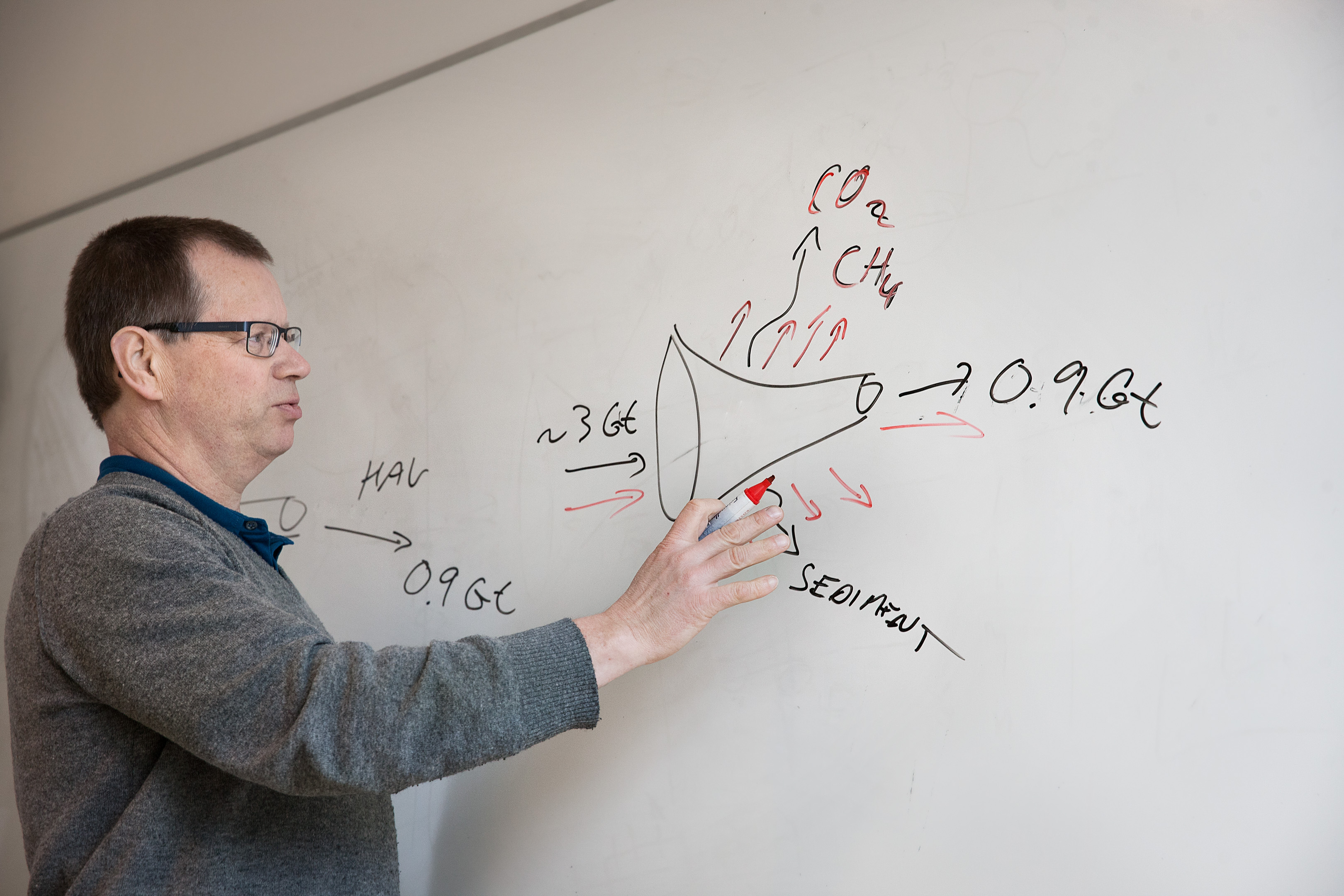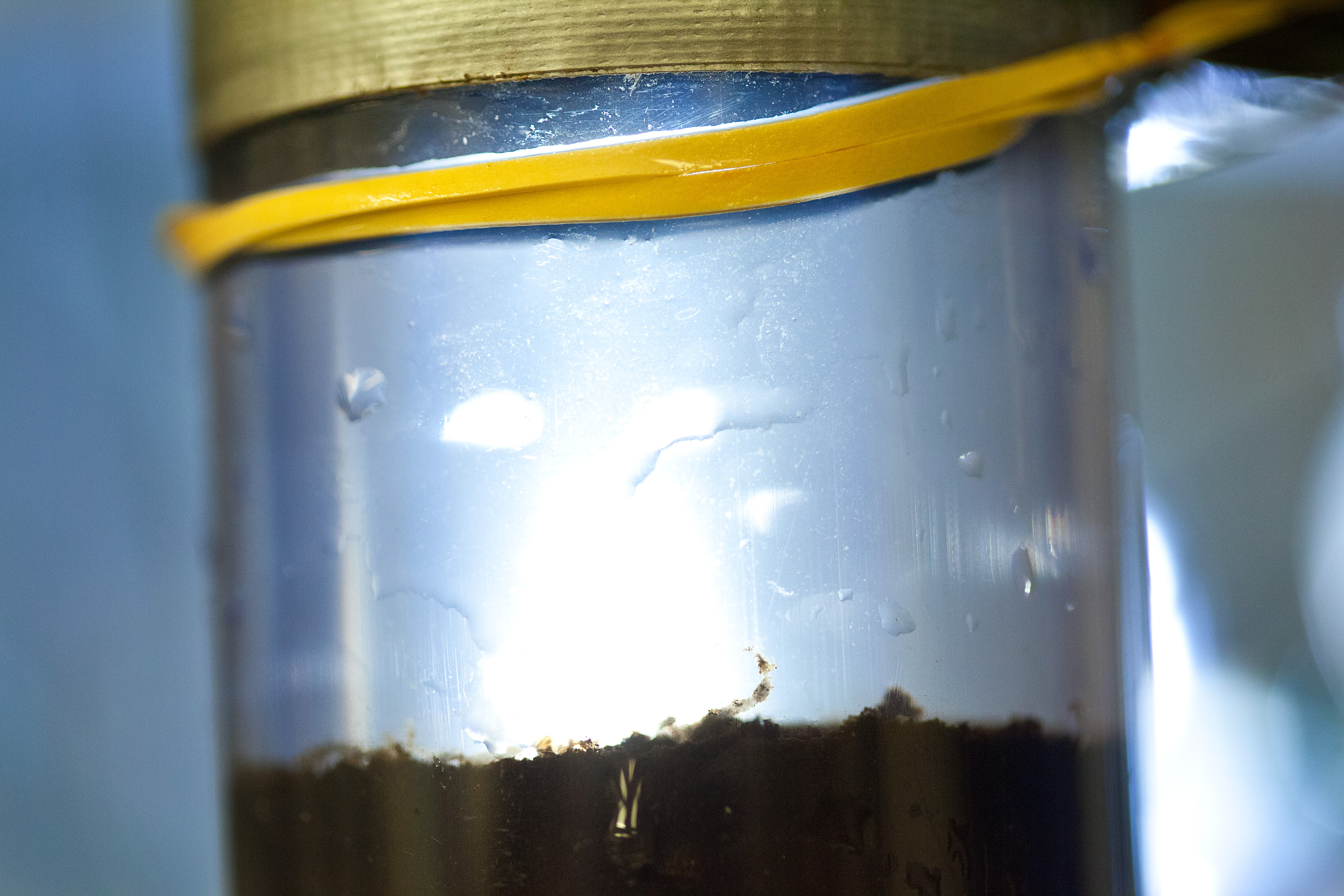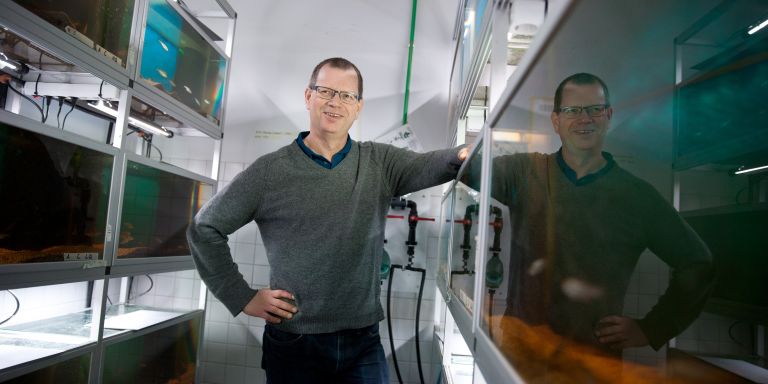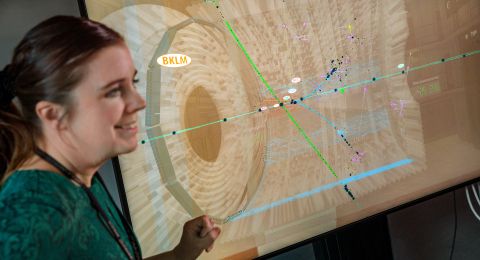
Project Grant 2013
Inland water ecosystems in the global carbon cycle
Principal investigator:
Lars Tranvik, Professor of Limnology
Co-investigators:
Siv Andersson
Jonas Bergquist
Stefan Bertilsson
Kevin Bishop
Peter Eklöv
Eva Lindström
Anna Rutgersson
Richard Svanbäck
Sebastian Sobek
Gesa Weyhenmeyer
Institution:
Uppsala University
Grant in SEK:
SEK 31 million over five years
Ten years ago, lakes were believed to be passive, carbon dioxide neutral systems in the global carbon cycle. The lakes were viewed as “pipes” where just as much carbon flowed out as flowed in. Today, we know that considerable amounts of organic matter are processed in the planet’s lakes and that they thereby contribute substantial amounts of carbon dioxide to the atmosphere. They thereby also contribute to the Earth’s greenhouse gas balance.
The basis of this new insight was local studies in different parts of the world where the researchers measured the flow of organic matter in and out of lakes, the flow of carbon dioxide and methane between lakes and the atmosphere, and also the lake sediment’s growth and carbon content. Microbiology studies also showed that bacteria play a key role in the lake’s carbon cycling in that they live on organic matter from the surrounding land.
“This way, the bacteria are a link between the lake’s food chain and the landscape surrounding the lake. It also means that the decomposition processes dominate over the primary production in lakes, which make lakes a net source of carbon dioxide to the atmosphere,” explains Lars Tranvik.
Theoretical project
The pieces fell into place when Lars Tranvik contributed to a theoretical research project at the University of California, Santa Barbara. The internationally composed team discussed the role of lakes in the global carbon cycle and realized that lakes should rather be described as a “funnel” than a pipe, meaning that more carbon comes into the lakes with inflowing water than disappears out with outflowing water.
In several rounds, the team has since made rough estimates on a global scale and concluded that a total of around 3 Gt (gigaton = billion tons) of organic carbon enter the world’s lakes, but only 0.9 Gt drain into the oceans. In between, the organic material is processed which means that about 0.5 Gt is buried in the sediment and 1.5 Gt disappears out to the atmosphere in the form of carbon dioxide and methane.

“We are talking about substantial figures. 2 Gt is as much as the net carbon uptake of the oceans. It also corresponds to a fourth of the carbon that our combustion of fossil material contributes to the atmosphere. In the 2007 International Panel on Climate Change (IPCC) report, inland waters were described as a passive system. In the new report from 2013, IPCC has adopted our new model and our articles are cited in the report. That’s very rewarding.”
Gathering strength
Through the project grant from the Knut and Alice Wallenberg Foundation, Lars Tranvik and 20 other researchers are gathering strength to try to understand the details that regulate and limit important processes in the carbon cycling of lakes in various ways. A central issue in the project involves what the chemical (organic molecules) and the biological (bacterial) diversity look like. Another is about what organic compounds bacteria can decompose and which ones they cannot decompose. A third question is if the bacteria are specialists or if they are generalists. The research team will also study what causes the sediment to be conserved for a long time, and what properties of the water surface affect the flow of gas between the water and the atmosphere.
The objective is to achieve a more mechanical view of the lakes’ carbon cycling, i.e. first understanding the system’s various parts to then try to understand how the various parts are connected. To succeed, the research team is interdisciplinary with ecologists, limnologists, microbiologists, biogeochemists, meteorologists and analytical organic chemists.
“Conducting interdisciplinary studies is of course a major challenge, but we already have several years’ experience so it will surely go well. For example, we will have regular workshops to look at the questions together. This is important, not least to foster this way of working in younger researchers.”

Mesocosms
The research team will concentrate its studies on some 15 round enclosures of lake water with a radius of 3-4 meters and a depth of 1.5 meters, called mesocosms. In the ponds, there will be various kinds of sediment, dissolved organic matter of various quantities and qualities, and various kinds of organisms including fish.
“This way, we can work in systems with a complexity that is similar to natural ecosystems, but nonetheless have the possibility of conducting controlled experiments.”
The research project is socially relevant in several ways.
“To be able to say something about the impact mankind has on the climate, we have to have good knowledge of nature and nature’s own processes, and also about how nature’s processes are affected by what we humans do.”
Text Anders Esselin
Translation Semantix
Photo Magnus Bergström



